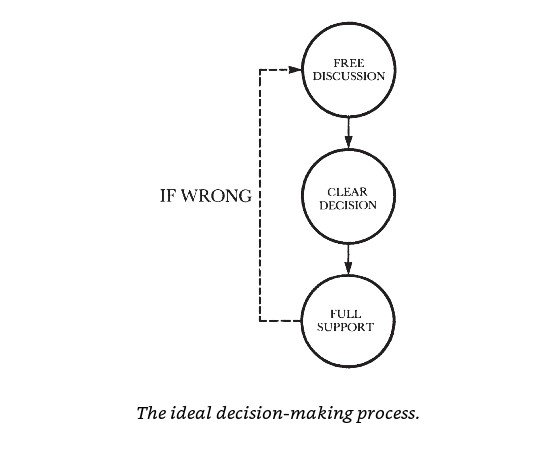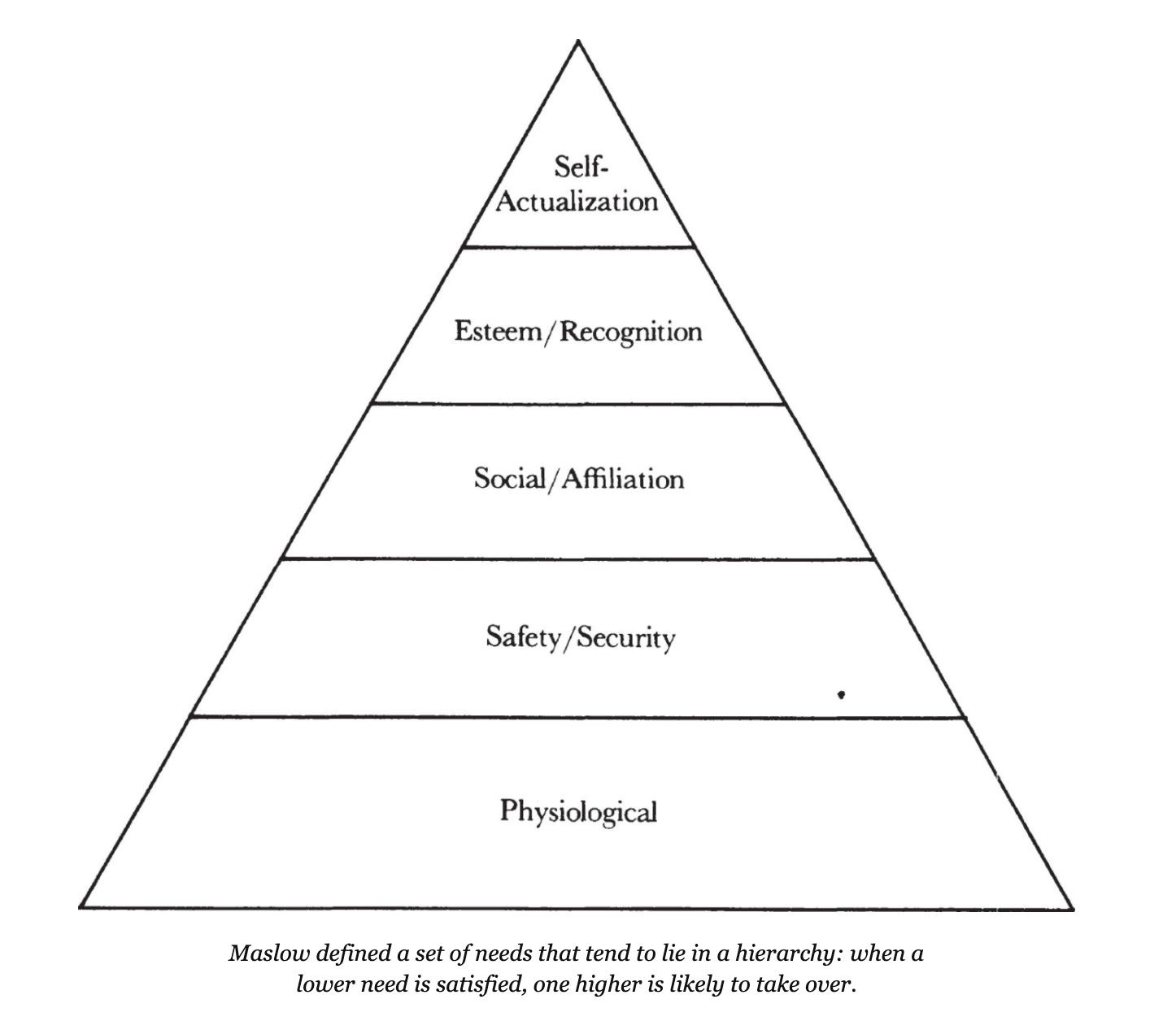High Output Management
A summary of High Output Management, by Andrew Grove.

This is a classic by Andrew Grove, the former CEO of Intel. Originally written in 1983, High Output Management goes over how to find success in middle management.
Introduction
The world changes. Everything moves faster nowadays, and anything that can be done will be done (if not by you, then by someone else). Modern industries have become more disorderly, and what has worked in the past won’t necessarily work today. Thus companies face two choices: adapt or die. Similarly, those who drive order out of the newfound disorder will find the most success in their careers.
As an individual, you’ll have to understand that regardless of where you work, you are in a business with one employee–yourself. You’re not entitled to a career, so you need to take charge as the sole proprietor. So regardless of how well things seem, you must continually dedicate yourself to cultivating your individual competitive advantage.
Fundamentals of Production
Successful production revolves around producing an output of an acceptable quality level during a scheduled delivery time while incurring the lowest possible cost.
If you want to run an operation well, you’ll need good measurements. Think of the production line as a black box. Capturing measurements or indicators is akin to cutting windows in the box. Good indicators have the following properties:
- The indicator covers the output of the work, not just the activity that's done.
- The indicator is a physical, countable thing.
- If the indicator is purely qualitative, it is paired with another indicator that measures quality.
Productivity is the measure of output over inputs. You can obviously work harder to increase productivity, but you can also work smarter. Leverage is the output generated by a specific work activity. One can increase leverage by automating away their job. Work simplification (e.g. improving or cutting processes) is another great way to boost leverage.
Managerial Leverage
A manager’s output is the combined output of his organization and neighboring organizations under his or her influence. You can think of the manager’s job to be making the company a success. Thus the outputs are the results achieved under the manager’s influence.
Managers act as force multipliers, since maximizing leverage is the best way to maximize output. After all, getting many other people to work better is the best result for the organization as a whole. Managers tend to focus on the four distinct activities: information gathering, sharing information, decision making, and being role models.
Information gathering
This should be the bulk of a manager’s day. The goal here is to have context around what’s going on in the organization. Getting ad-hoc “golden tidbits” of information through verbal conversation tends to be valuable, but it needs to be balanced with the disciplined formalization of information. Addressing customer complaints and observing random happenings within the company also help show how the organization operates.
Sharing Information
Managers also need to be a source of information. The manager imparts objectives, priorities, and preferences onto those he or she influences. Having informational alignment with others is critical for setting people in the right direction and delegating work successfully.
Decision Making
Making decisions can be a matter of determining resource allocation or solving problems. However, all good decisions depend on the manager having a solid base of information. (That’s why information gathering is the most important managerial task.)
Being a Role Model
Managers are role models for everyone. Nothing sends a stronger message than setting a good example. Thus it’s also important that others have visibility into a manager’s actions. How people handle their own time is the most important aspect of being a role model.
Meetings
Meetings have a bad reputation, but that’s usually because they’re handled poorly. Meetings are the medium for managers to do the bulk of their work (i.e. make decisions and exchange information).
Process-Oriented Meetings
Process-oriented meetings make up the first category of meetings. These meetings should be recurring, people can forecast the contents of the meeting, and they allow managers to batch their interactions with others.
One-on-Ones
One-on-ones occur between a manager and a direct report. The manager plays the role of a coach, while the report shares context on what’s been going on in the trenches. Note that the subordinate should set the tone and agenda of this meeting.
Staff Meetings
Staff meetings put a manager and all of the direct reports together. These meetings should have an agenda that’s prepared in advance and involves multiple members of the team. There should also be an open session for handling miscellaneous discussions and housekeeping tasks.
Operation Reviews
Operation reviews have managers present to their cross-functional peers. Such meetings exist to spread context across organizations that wouldn’t otherwise interact with each other much. If participants aren’t presenting, they should be actively learning.
Mission-Oriented Meetings
Mission-oriented meetings exist to solve specific problems that arise in a company. Unlike its process-oriented counterpart, these meetings tend to be more ad-hoc and should not be recurring. Prior to any action, the meeting owner must make sure that a meeting is necessary, desirable, and justifiable.
Decision Making
The ideal decision-making process follows the sequence below:

The more disagreement or controversy around a decision, the more the discussion must be “free.” In bad organizations, it’s tempting for employees to wait until the boss expresses an opinion and then act like sycophants. That fails to solve the problem at hand.
Once a decision has been made, it must be clear. Ambiguous or half-assed decisions often lead to little progress and can breed resentment among those involved.
Lastly, once the decision is settled, it needs the full support of the stakeholders. This isn’t necessarily agreement, but rather the participants committing to back the decision.
Before making a decision, you need to know the answer to the following six questions in advance:
- What decision needs to be made?
- When does it have to be made?
- Who will decide?
- Who will need to be consulted prior to making the decision?
- Who will ratify or veto the decision?
- Who will need to be informed of the decision?
Making tough decisions is difficult, but people should not avoid following through with such choices. To eschew difficult decisions will just cultivate more problems down the road.
The Sports Analogy
When a person isn’t doing his job, it’s either because he can’t do it or won’t do it. In other words, he’s either not capable or not motivated.

The most important task of a manager is to elicit peak performance among all subordinates. Thus, when an employee suffers from low motivation, the manager must step up. Motivation comes from within, so the best thing to do is foster an environment where motivated people can thrive.
A human’s motivators correspond well to Maslow’s Hierarchy of Needs. As lower needs are met, they stop becoming sources of motivation. (That’s why back in the day, fear of starving on the streets was great motivation.) The manager should strive to grow the employee to the point where self-actualization becomes a motivator. At such a point, motivation becomes limitless.

To be high achievers, people must test the limits of what they can do. The workplace doesn’t naturally require the need to push one's limits, so the manager must create an environment that encourages growth. Everyone should strive to accomplish things beyond their immediate grasp, even if it results in failure sometimes.
A company is like a sports team, and the manager is the coach. Everybody should aim to perform their best and improve, and the managers exist to push them in the right direction.
Task-Relevant Maturity
The best management style is never static. Rather, it depends on the task-relevant maturity (or TRM) of the subordinate. TRM grows based on one’s motivation, preparation for a job role, and prior experience level. Don’t mistake TRM for general competence; it more so resembles how accustomed people are to their current jobs.
As TRM increases, the manager should give more autonomy. Regardless of one’s TRM, the manager should still monitor the subordinate’s work closely to avoid surprises. After all, delegating a task does not mean abdicating responsibility.
| TRM of subordinate | Characteristics of effective management style |
|---|---|
| Low | Structured; task-oriented; tell “what,” “when,” and “how” |
| Medium | Individual-oriented; emphasis on two-way communication, support, mutual reasoning |
| High | Involvement by manager minimal; establishing objectives and monitoring |



Comments ()